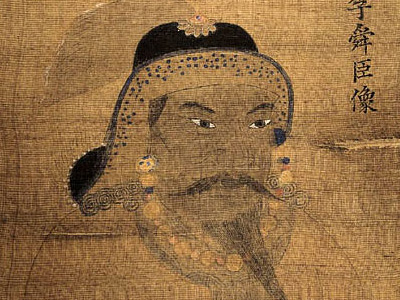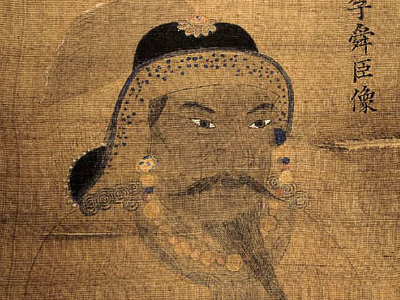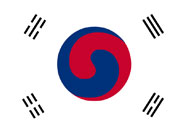Yi Sun-Shin 이순신 (1545-1598)

Early Life
Yi was born in Geoncheon-dong Street (건천동; 乾川洞), Hanseong (then capital, present-day Inhyeon-dong, Jung-gu District, Seoul) but spent his adolescence and early adulthood period before passing the military examination in Asan where his mother's relatives lived and where now a shrine to him stands.
His family was part of the Korean Deoksu Yi clan. His grandfather Yi Baeg-nok (이백록; 李百祿) retired from politics when neo-Confucian reformer Jo Gwang-jo was executed in the Third Literati Purge of 1519 and moved to a village near where Jo was buried. Yi Sun-sin's father Yi Jeong (이정, 李貞) was likewise disillusioned with politics and did not enter government service as expected of a yangban (noble) family. However, popular belief that Yi Sun-sin had difficult childhood because of his family's connection with Jo Gwang-jo is not true.
One of the most important events of his early life was when Yi met and became friends with Ryu Seong-ryong (류성룡; 柳成龍; 1542–1607), a prominent scholar who held the key official position of Dochaechalsa (도체찰사; 都體察使), and was in command of the military during the Japanese invasions of Korea (1592–1598). During the war, Yu's support of Admiral Yi was critical to Yi's achievements.
As a young boy, Yi played war games with other local boys, showing excellent leadership talent at an early age and constructed his own bow and fletched his own arrows as a teenager. Yi also became proficient in reading and writing Hanmun.
In 1576, Yi passed the military examination (무과; 武科). Yi is said to have impressed the judges with his archery, but failed to pass the test when he broke a leg during the cavalry examination. After he re-entered and passed the examination, Yi was posted to the Bukbyeong (Northern Frontier Army) military district in Hamgyeong province. However, he was the oldest junior officer at the age of thirty-two. There, Yi experienced battles defending the border settlements against the Jurchen marauders and quickly became known for his strategic skills and leadership.
In 1583, he lured the Jurchen into battle, defeated the marauders, and captured their chief, Mu Pai Nai. According to a contemporary tradition, Yi then spent three years out of the army upon hearing of his father's death. After his return to the front line, Yi led a string of successful campaigns against the Jurchen.
However, his brilliance and accomplishments so soon in his career made his superiors jealous, and they falsely accused him of desertion during battle. The conspiracy was led by General Yi Il (이일; 李鎰; 1538–1601), who would later fail to repel the Japanese invasion at the Battle of Sangju. This tendency to sabotage and frame professional adversaries was very common in the later years of the Joseon military and government. Yi was stripped of his rank, imprisoned, and tortured. After his release, Yi was allowed to fight as an enlisted soldier. After a short period of time, however, he was appointed as the commander of the Seoul Hunryeonwon (a military training center) and was later transferred to a small county, to be its military magistrate.
Yi's efforts in northern Korea was rewarded when Yi was assigned as Commander of the Left Jeolla Province (전라 좌도; 全羅左道) Naval District. Within the span of a few months in late 1590, he received four military appointments, in rapid succession, with each subsequent post carrying greater responsibility than the last: Commander of the Kosarijin Garrison in Pyeongan province, Commander of the Manpo Garrison, also in Pyeongan province, and the Commander of the Wando Garrison, in Jeolla province, before finally receiving the appointment as Commander of the Left Jeolla Naval District.
The royal court was in a state of confusion over the possibility of a war with Japan, now unified under the rule of Toyotomi Hideyoshi, and the unstable situation in Manchuria where a young Jurchen chieftain named Nurhaci was gathering strength. Nurhaci's descendants would become masters of China as founders of the Qing Dynasty in a few decades' time, after invading Korea in 1627 and 1637.
Yi assumed his new post at Yeosu on the 13th day of the 2nd lunar month of 1591 (March 13, 1591). From there, he was able to undertake a buildup of the regional navy, which was later used to confront the Japanese invasion force. He subsequently began to strengthen the province's navy with a series of reforms, including the construction of the turtle ship.
HISTORY

RESOURCES
This article uses material from the Wikipedia article "Yi Sun-Shin", which is released under the Creative Commons Attribution-Share-Alike License 3.0.
© Stories Preschool. All Rights Reserved.











